.
Seppuku is a form of ritual suicide that originated in Japan with the emergence of the warrior class. It was a means for samurai to achieve an honorable death in accordance with the Bushi Code (Bushido).
A warrior committed suicide for several reasons:
to avoid capture after being defeated in battle, to protest, or to express grief over the death of a revered leader.
In the early 1400s, seppuku became a common form of capital punishment for samurai who had committed crimes. There was even a female version of seppuku called jigai, which involved cutting the throat using a special sword known as a tanto.
.
On November 19, 1577, Matsunaga Hisahide committed seppuku at Shigisan Castle after being overwhelmed by Oda Nobunaga’s forces. His two sons, Kojiro and Hisamichi also committed suicide during the siege.
.
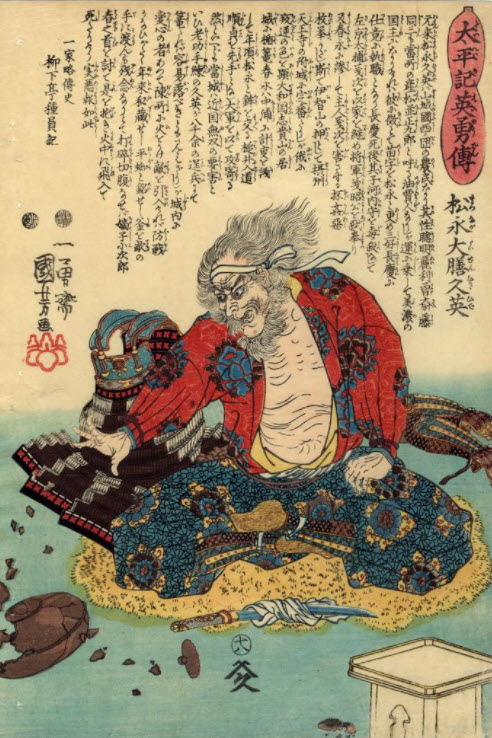
.
Matsunaga was a daimyo (feudal lord) of the Yamato Province (present-day Nara Prefecture). He was born in 1508 and shared the same lineage of the Fujiwara clan. The Fujiwara clan dominated Japanese politics during the Heian period (794 to 1185). Over the years, Matsunaga won a reputation in history as a schemer and a scoundrel. Often portrayed as a shriveled and scheming old man, Matsunaga was quite the opposite; a tall, handsome, and educated man who was a patron of the arts.
Although he was married to Miyoshi Nagayoshi’s daughter and served as his retainer in the 1540s, Matsunaga eventually turned against his master. It was rumored that he poisoned Miyoshi’s son and heir, Yoshioki. Miyoshi’s three brothers also died under mysterious circumstances between 1561 and 1564. This left Miyoshi’s adopted son, Yoshitsugu, to rule after his death in 1564. Unfortunately, the boy was only 15 years old at the time and too young to assume the role of head of the Miyoshi clan. This responsibility was shared by the boy’s three guardians, Miyoshi Nagayuki, Miyoshi Masayasu, and Iwanari Tomomichi.
.
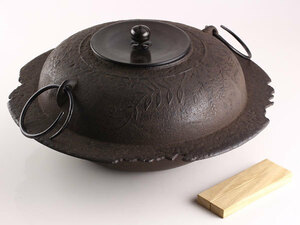
.
In 1566, fighting ensued between Matsunaga and the Miyoshi clan. In the course of the conflict, Matsunaga was reputed to have burned down the Great Buddha Hall of Todai-ji, a Buddhist temple in Nara. In 1568, after Oda Nobunaga seized Kyoto, Matsunaga decided to ally with him. In return, he was allowed to keep his lands in Yamato. However, by 1573, he joined forces with Miyoshi Yoshitsugu and began conspiring against Oda. This proved to be an unsuccessful venture and Matsunaga turned to Oda once again, helping him destroy Yoshitsugu and the remaining members of the Miyoshi clan.
In 1576, when Oda Nobunaga attacked Ishiyama Hongan-ji, Matsunaga also became involved in the siege. The Ishiyama Hongan-ji was a fortress belonging to the Ikko-ikki (the leagues of warrior monks and commoners who opposed samurai rule during the Sengoku period). The siege of Hongan-ji lasted 11 years, making it the longest siege in Japanese history.
It wasn’t long before Matsunaga rebelled against Oda again. In 1577, he and his son Hisamichi, abandoned their positions during the Siege of Ishiyama Hongan-ji and returned to Yamato. They had hoped that other daimyo would follow, but this proved not to be the case.
.
An angry Oda Nobunaga surrounded Matsunaga in Shigisan Castle and demanded his head. A tea enthusiast, he also sought a very valuable tea item that was in Matsunaga’s possession, the Hiragumo. The Hiragumo was an iron tea kettle whose shape resembles a flat spider. But the defiant Matsunaga smashed the Hiragumo to pieces before committing seppuku. He also ordered that his head be destroyed to prevent it from becoming a trophy. His son, Kojiro, apparently jumped off of the castle wall with his father’s head in his arms and drove his sword through his own throat.
.
.
Photo Credit: Kuniyoshi (1797 – 1861) Japanese Woodblock Print
“MATSUNAGA DAIZEN HISAHIDE (松永大膳久英 – ACTUALLY MATSUNAGA
HISAHIDE [松永久秀]), #18 FROM THE SERIES HEROES OF THE GREAT PEACE
(TAIHEIKI EIYŪDEN – 太平記英勇傳)”
Hiragumo: Sample photo / Jauce Shopping Service
.
.
『Kristine’s Eye on Japan: Introduction to Japanese Culture』
Writer: Kristine Ohkubo
.
.
.
(5/9/2022)

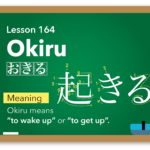

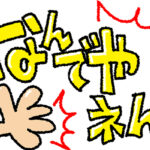
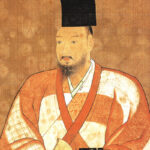
You need to be a part of a contest for one of the most useful websites on the net. I will recommend this site!